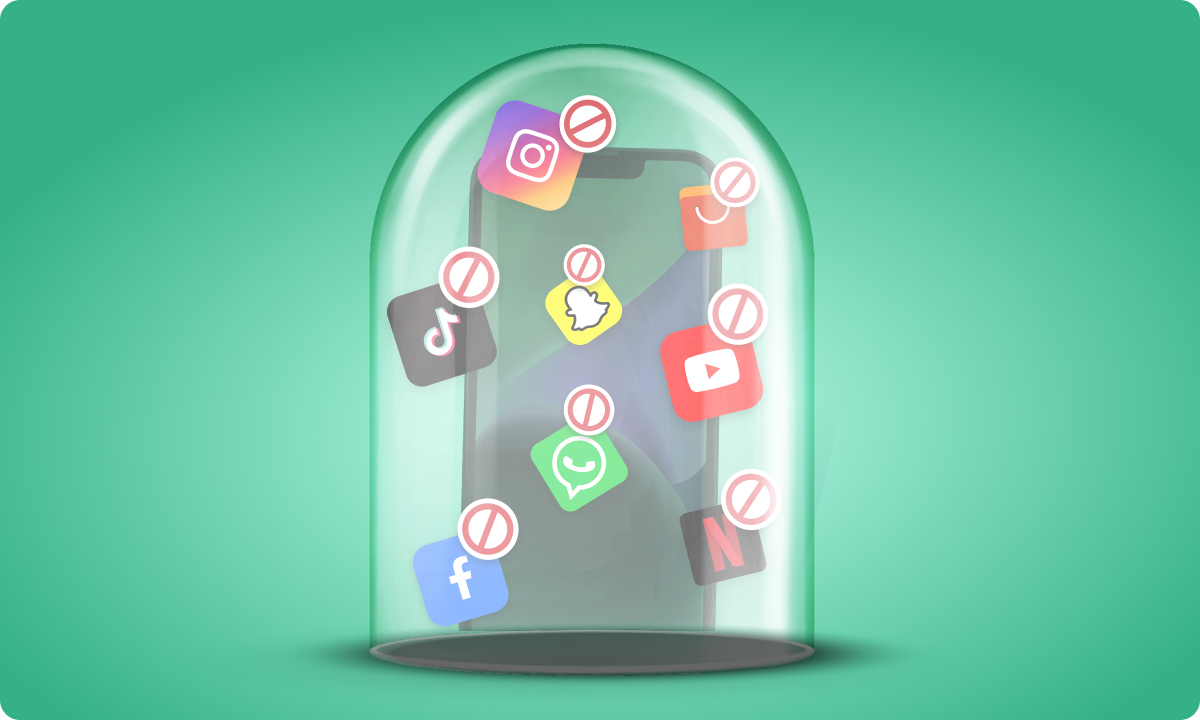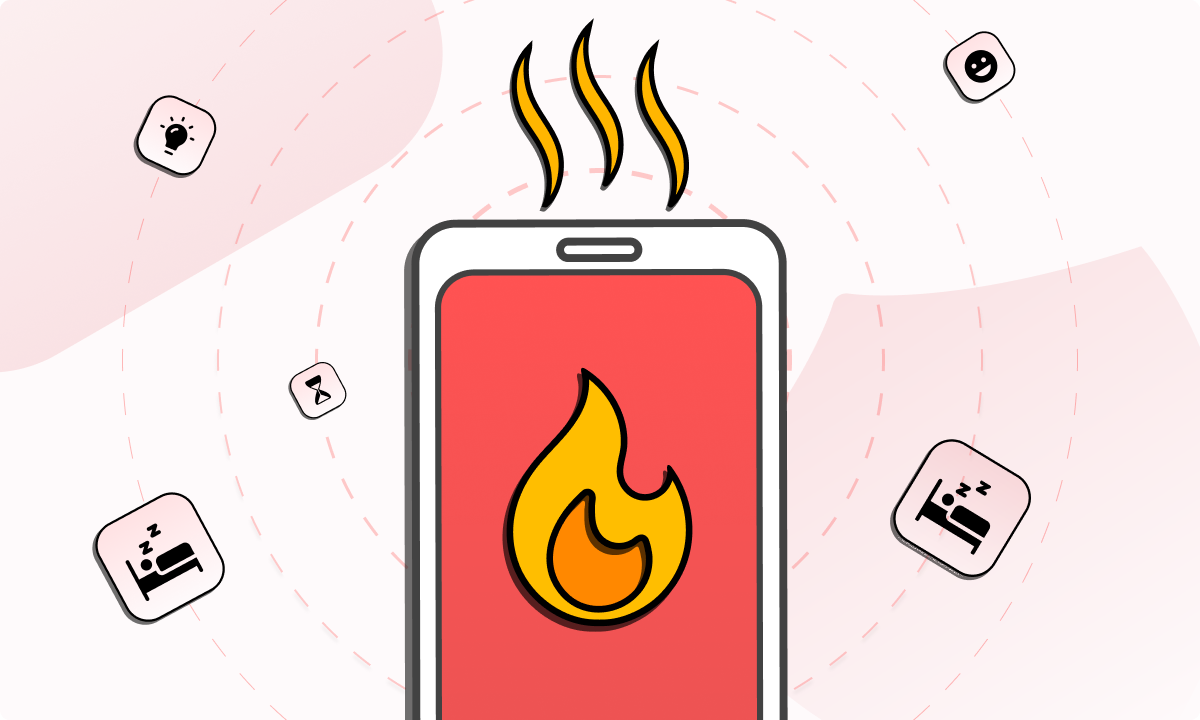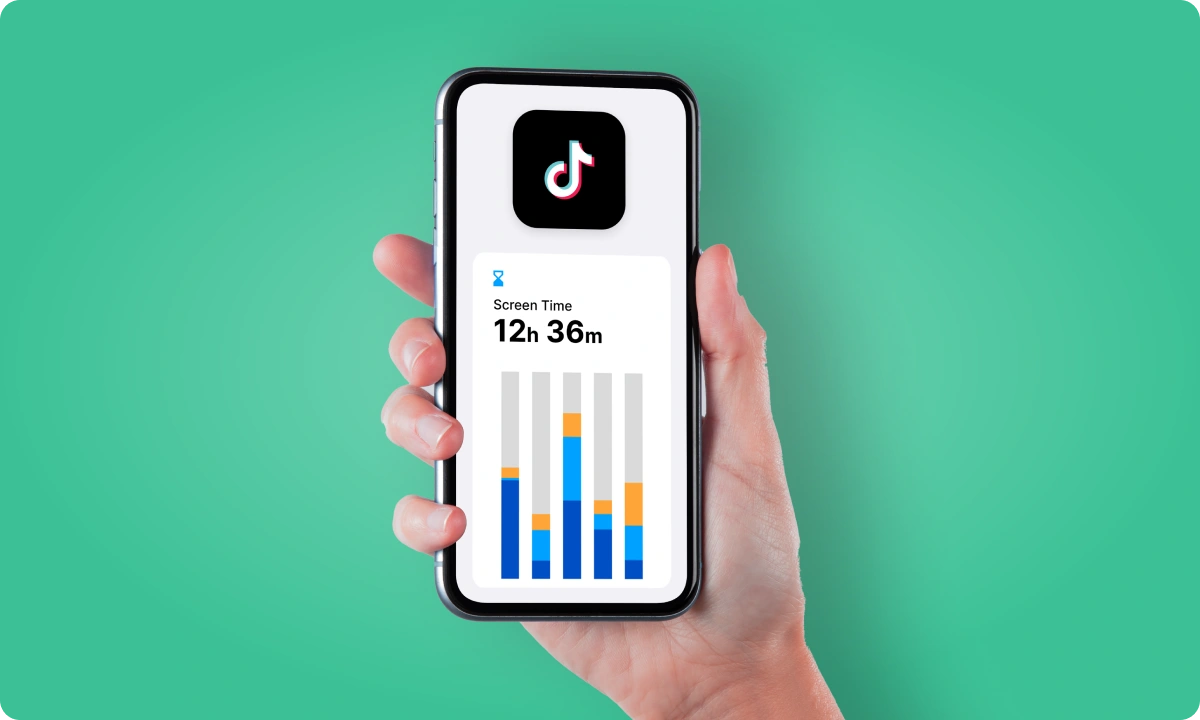It’s easy to feel overwhelmed by constant notifications and screen time, especially in our hyper-connected society. On average, we spend around 6.5 hours on the internet every day based on research done by Global Web Index. This is why we all need a digital detox. Taking a break from devices can help restore your balance and improve your overall well-being. Let’s discover its benefits and how you can properly implement it into your routine.
What is Digital Detox?
A digital detox refers to a designated period where you consciously reduce or completely eliminate your usage of electronic devices. This could include smartphones, tablets, laptops, and computers. The primary aim of doing this is to reduce stress and improve your interactions within the physical environment, rather than through screens.
This process involves stepping back from habitual scrolling, watching, and interacting online so you’ll be able to interact more deeply offline. The main focus is to enrich your personal experiences away from the screen and it can be done using various practices such as reading a book, spending time in nature, or enjoying face-to-face conversations. This much-needed break not only helps reset your mental space, but also encourages a healthier lifestyle as it reduces your reliance on technology for entertainment and social interactions.
The Benefits of a Digital Detox
Taking a break from constant screen exposure and online connectivity can significantly improve your overall well-being. This practice of temporarily stepping away from electronic devices offers a variety of benefits that touch upon different aspects of life—from enhancing mental health to boosting physical well-being:
Improved Mental Clarity and Focus
Constant notifications and the barrage of information from screens can scatter your attention and make it difficult to concentrate but when you reduce your screen time, you’re allowing your mind to relax and refocus. This mental break can help sharpen your concentration and improve your ability to focus on tasks without the usual distractions.
Better Sleep Quality
Exposure to the blue light emitted by screens can disrupt your natural sleep patterns by inhibiting the production of melatonin, which is the hormone responsible for regulating sleep. Reducing screen time, especially before bed, can help normalize your sleep schedule. This leads to a deeper and more restful sleep. And of course, better sleep not only improves your mood but also has significant health benefits, such as reduced risk of chronic conditions and a better immune system.
Strengthened Personal Relationships
Screen time often replaces face-to-face interactions with quick digital communications. And while this may be convenient, it can actually weaken personal relationships. During a tech break, you have more opportunities to interact directly with others. This strengthens your connections and builds stronger, more meaningful relationships and bondings that virtual communication often lacks.
Decreased Stress and Anxiety
The constant influx of news and social media updates can increase stress and anxiety levels. A period away from devices helps decrease the stimuli that provoke stress responses in the brain so you’ll feel calmer and more at peace. This reduction in stress can also lead to better mental health with a sense of tranquility that’s often eroded by excessive tech use.
Increased Physical Activity
Without the lure of screens, you’re more likely to participate in physical activities. Whether it’s walking, cycling, or participating in sports, doing any physical activity will increase your energy levels. This also reduces the risk of many health issues and will even trigger your body to release endorphins to improve your mood.
Increased Awareness and Appreciation of the Environment
Freeing up the time that you usually spend on devices can redirect your attention to the natural environment. This heightened awareness can increase your appreciation for the outdoors and will encourage you to spend more time in nature, which is known for its therapeutic effects, such as improving the mood and reducing the feelings of fatigue.
Better Self-Reflection and Self-Discovery
Without the constant influence of social media and the opinions of others online, you can have a chance to reflect on your own thoughts and feelings. You might not be aware of it but this can be a very powerful tool for discovering yourself.
How to Do a Digital Detox?
Taking a break from technology can seem daunting, especially in a society where staying connected is often equated with staying informed and social. However, managing your tech use doesn’t require you to completely abandon your devices but rather to use them more mindfully. Here’s a detailed guide on how to effectively reduce your screen time and reclaim control over your tech habits.
1. Detox your device with BlockSite
You can install this browser extension and app to block site distractions and manage your online environment effectively. These tools help maintain a focused online experience and prevent you from falling into time-wasting activities:
a. Set up a Block List to keep away distracting sites. This can be done both via the app and the browser extension.
b. Use Block Apps to disable specific mobile applications from your device. This feature is only available on the mobile app.
c. Use the Focus Mode so you can focus on a task and be more productive. This feature is available both on the browser extension and the app.
2. Set specific times for email and social media
It’s best to designate certain hours of the day strictly for checking your emails and social media. This limits the habit of constantly refreshing these platforms, which can consume much of your day. When you batch these activities into specific time slots, you’ll be able to free up other parts of your day for tech-free activities and maintain a balanced schedule.
3. Leave your devices out of the bedroom
Creating a tech-free zone in your sleeping area can significantly improve your sleep quality. You see, the blue light from screens can disrupt your sleep cycle, so by keeping these devices out of the bedroom, you’re encouraging your body to enter its natural sleep rhythms for a more restful night.
4. Use ‘do not disturb’ during quality time
Activating ‘do not disturb’ settings on your devices during meals, family gatherings, or meetings can help you stay present. This setting prevents notifications from pulling your attention away from the moment, so you can fully interact with the people around you.
5. Go old school with alarms and reminders
Using a traditional alarm clock instead of your phone helps you avoid starting your day with screen time. Similarly, using paper planners or notebooks for reminders can keep you organized without the need for digital prompts. This will reduce your reliance on tech throughout the day.
6. Take regular breaks from your screens
Make it a habit to take short breaks from screen time every hour. This could involve:
- Stretching
- Walking
- Doing a quick non-screen-related activity
These breaks not only reduce eye strain and physical discomfort, but also refresh your mind and help you maintain sustained concentration.
7. Establish no-tech zones
Designate certain areas of your home as no-tech zones. It could be these areas:
- Dining room
- Bedroom
- Kitchen
This helps create physical spaces where you can participate in activities without any tech interruptions. This will foster a healthier balance between tech use and personal life.
8. Mindful usage of devices
Always be conscious of why and when you use your devices. Ask yourself whether your tech use is purposeful or already habitual. Being mindful helps you make intentional choices about tech use, rather than mindlessly scrolling through feeds that don’t really matter.
9. Prefer physical books to e-books
Choosing to read physical books instead of e-books during your downtime can decrease your overall screen time, particularly before bedtime. This helps your brain wind down and it can also prepare you for a better night’s sleep since there’s no stimulating effects of screen light.
10. Have technology-free days
Designating entire days without tech can be a powerful way to reset your tech habits. These breaks can be rejuvenating as it gives you a chance to do physical hobbies or actual activities that you enjoy outside of the tech sphere.
11. Turn off those notifications
Disable notifications for apps that you do not need immediate alerts from. This reduces the constant beckoning of your devices so you can check on updates on your own terms rather than being continually interrupted by unimportant pop-ups.
12. Use technology intentionally
Instead of casual browsing, you should use technology for specific purposes. It can be for:
- Learning something new
- Completing work
- Staying in touch with loved ones
You see, intentional use changes the way that technology serves you and not the other way around.
13. Schedule daily tech check-ins
Rather than being constantly available, you should schedule brief check-ins for social media or email throughout the day. Doing this practice helps keep you informed and connected without being overwhelmed by the continuous need to interact online.
14. Do physical activities
Maybe it’s time to replace some of your tech activities with physical ones like the following:
- Going for a walk
- Doing yoga
- Sports
Physical activities not only improve your health but it can also significantly decrease your screen time.
15. Social interactions without screens
Make a conscious effort to participate in social activities that don’t involve technology at all. Having coffee with friends, joining book clubs, or doing outdoor group activities can improve your relationships that are far beyond the screen.
16. Be aware of your online time
Awareness is the first step to change, and knowing your patterns can help you adjust your habits effectively. You can keep track of how much time you’ve spent online with the help of apps that are capable of monitoring internet usage.
Take the Leap Towards a Healthier You
So, are you ready to break free from the overwhelming hold of technology? Starting small, perhaps with a single day free from excessive tech use, can make a significant difference. You can gradually increase the duration of your tech breaks as you become more comfortable with the process. Remember that your goal isn’t to eliminate technology entirely but to keep a healthy balance that improves your life.
By setting the right boundaries and using tools like BlockSite, you’ll be able to manage your tech habits more effectively. This can lead to improved mental clarity, reduced stress, and better overall happiness. So make the change today. Take the first step towards reclaiming your focus and enriching your daily experiences!
FAQs
What are the signs that I need a digital detox?
There are many signs. If you experience anxiety when you can’t find your phone, if you’re spending more time online than you intended, or if you have physical discomfort such as eye strain or headaches, these are clear indicators that it might be time to consider taking a break from your computer and gadgets.
How long should a digital detox last?
The duration of a digital detox can vary depending on individual needs and lifestyle. Some people benefit from disconnecting for a short period, like a day, while others may find extended periods, such as a week or a month, more beneficial. The key is to choose a timeframe that reduces stress without causing disruption to your necessary activities.
Can I do a digital detox while still using my phone for work?
Yes, it’s entirely possible to reduce your tech usage without fully eliminating it, especially for tasks that are work related. Your aim is to set clear boundaries for work use and minimize them for non-essential browsing, gaming, and social media. Designating specific times for checking emails and using communication apps can help maintain productivity without excess tech consumption.
What should I do if I feel isolated during my digital detox?
Feeling isolated is a common concern when pulling back from tech-heavy interactions. To combat this, participate more in face-to-face interactions. Arrange meet-ups with friends, join community events, or enlist yourself in group activities like sports or hobby clubs that encourage personal interaction and build connections outside of the virtual environment.
When will I start to see the effects of a digital detox?
The effects of reducing tech usage can often be felt within a few days. Many report improvements in mood, heightened awareness of their surroundings, and a better night’s sleep shortly after beginning their tech break. Over time, these effects can contribute to lasting changes in how you interact with technology, as it promotes a healthier balance between tech use and everyday life.





